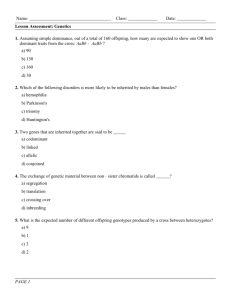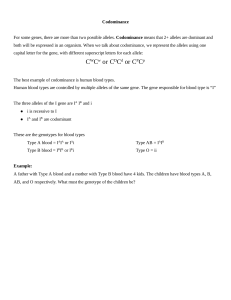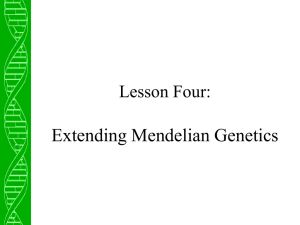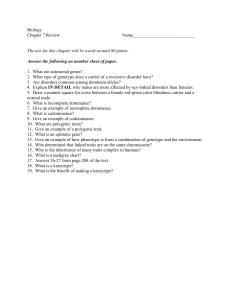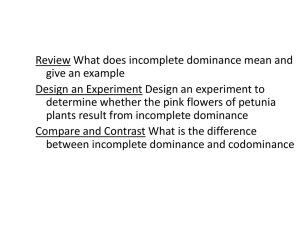Lecture 19 Basics: Beyond simple dominance
advertisement
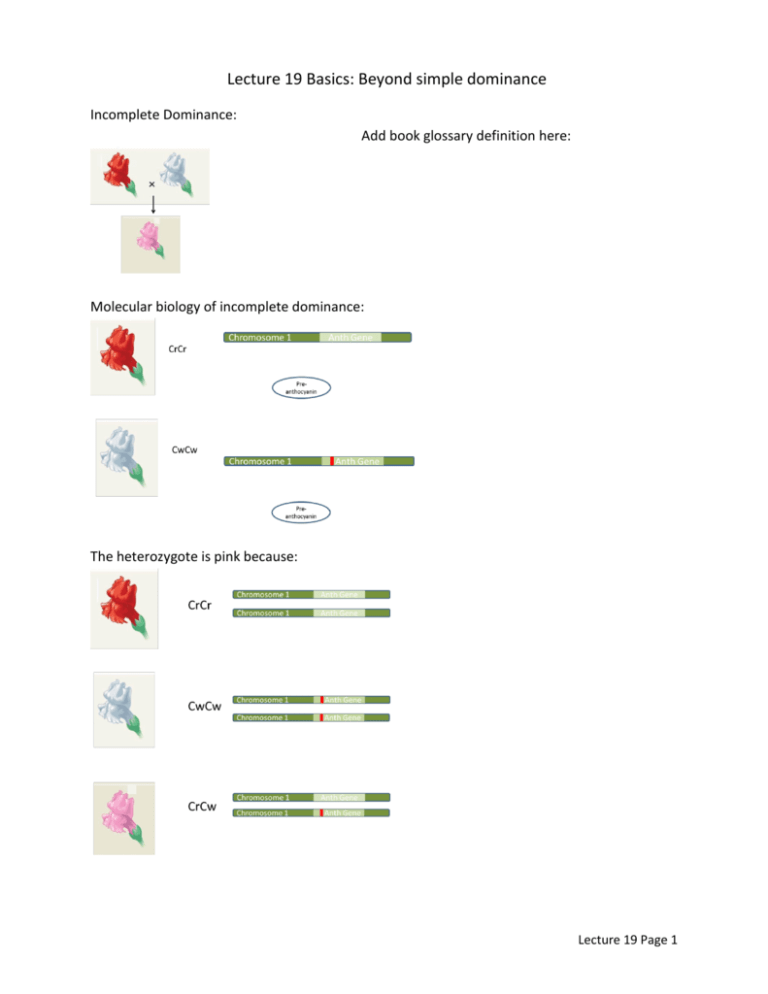
Lecture 19 Basics: Beyond simple dominance Incomplete Dominance: Add book glossary definition here: Molecular biology of incomplete dominance: The heterozygote is pink because: Lecture 19 Page 1 Codominance: Add book glossary definition here: Molecular biology of codominance: Codominance and simple dominance in one gene: In codominance (IA IB): In simple dominance (IB i): Blood genotypes and phenotypes: Lecture 19 Page 2 Multiple alleles: Epistasis: Add book glossary definition here: Overview: Lecture 19 Page 3 The BB genotype The bb genotype The heterozygote Bb: The EE or Ee genotype: Lecture 19 Page 4 The ee genotype: Pleiotropy: Add book glossary definition here: Lecture 19 Page 5 Polygenic inheritance: Add book glossary definition here: Lecture 19 Page 6 Class Notes: Sixteen alleles are known to exist for a given gene in a diploid organism. This means that any given individual of that species can have: A. Up to 16 chromosomes with that gene B. Up to 16 genes for that trait C. A haploid number of 8 chromosomes D. Up to 16 different traits E. At most, 2 alleles for that gene If two parents have children of all four blood types, what must the parental phenotypes be? A. One is A; one is B B. Both are AB C. One parent can be O D. Neither parent can be AB The incompletely dominant gene for snapdragon flower color has two alleles, “Cr” and “Cw.” Two fluorescent markers are made with binding sites for the mRNA and the protein produced by the gene. If the markers are added to a cell within the pea flower petal, draw the amount of fluorescence seen in the remaining genotypes: Mouse coat color depends on two genes. The epistatic gene C (color) determines whether pigment will be deposited in hair (C is dominant to c). The B allele (black) is dominant to the b allele (brown). If two heterozygous mice are crossed, what proportion of their offspring will be white? Sperm BC bC Bc bc BC Eggs bC Bc bc Proportion white: ________________ Lecture 19 Page 7
